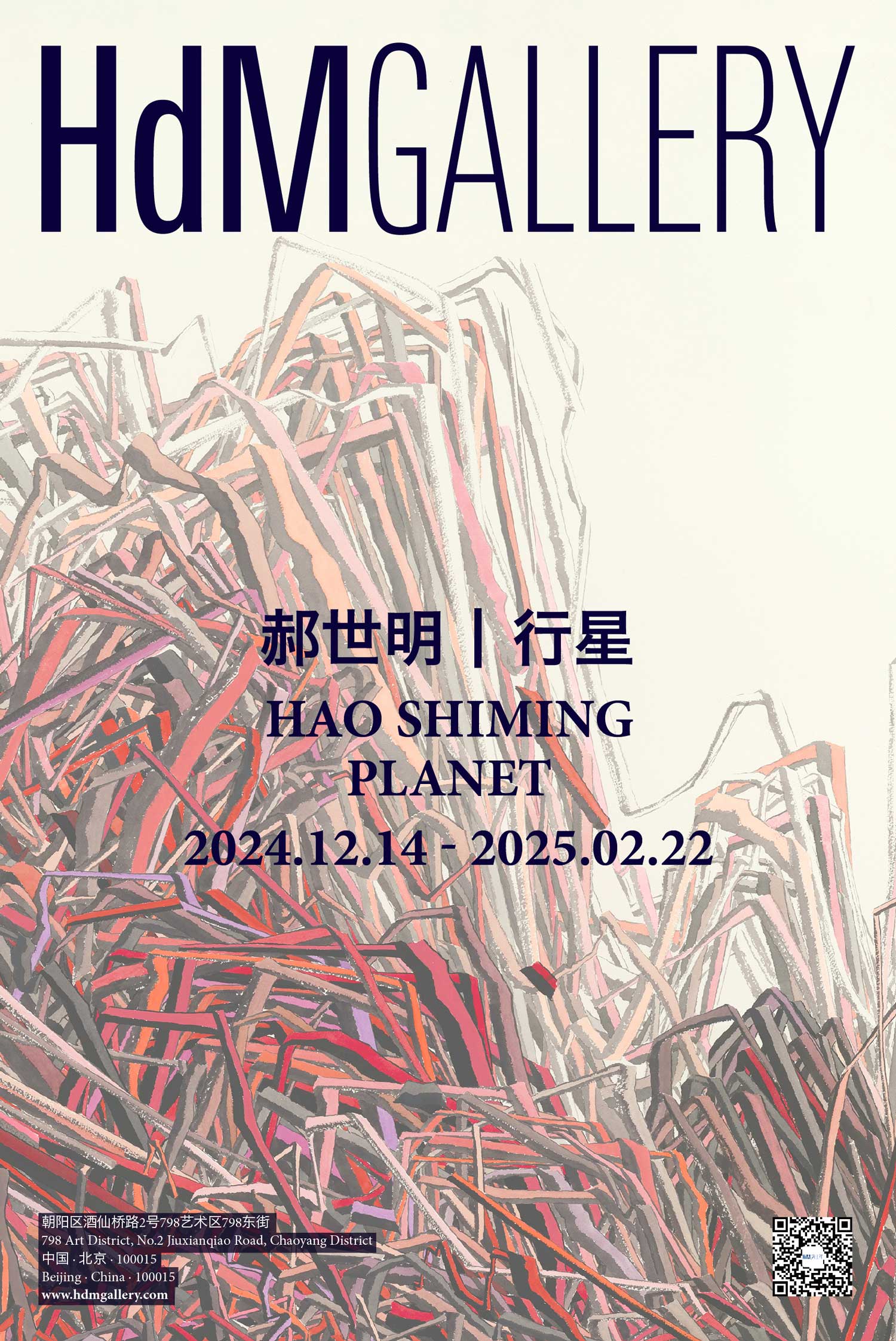HdM Gallery Square Room is pleased to present the solo exhibitionPlanet by artist Hao Shiming, opening on December 14th. This exhibition highlights new works from Hao Shiming's Harmony series and Stone series. The artist seeks to reconstruct traditional core elements within an innovative framework by exploring Chinese calligraphy and a broader artistic expression shaped by traditional culture.
"Huangdi (the Yellow Thearch) examined and established the celestial calendar, defined Wuxing (five elements), and determined the cycles of waxing and waning (revised the calendar and set the beginning of the first month)."
Records of the Grand Historian (Shiji), Book of Calendars, Han Dynasty
The imagination and observation of planets by ancient Chinese scholars can be traced back to the Han Dynasty (Western Han, 202BC – 9 AD). The emergence of astronomy broadened humanity's understanding of abstract concepts such as Yi (易), Dao (道), the Five Elements (Wu Xing), and the principle of "the unity of heaven and humanity" (Tian Ren He Yi). As products of ancient astronomical studies, planets and their orbits not only facilitated the calculation of calendar and time but also bring up the debate of weather there is "an unalterable law of the universe." Just as the motion of planets follows an invisible forces that govern their trajectories, might all things in the world "colliding" and "interacting" similarly adhere to a perpetual state of convergence and divergence? This exhibition revolves around the artist's exploration of this everlasting philosophical concept.
The Harmony series is a continuous exploration of Hao Shiming's works on paper, which center on the "double-hooked" technique inspired by traditional Chinese calligraphy. By pre-drawing liner colors as the fundamental base, Hao meticulously outlines each stroke and layering colors repetitively to achieve a three-dimensional visual effect. Grounded in the structure of traditional Chinese calligraphy, his works on paper not only present an abstract expression that balances order and readability, but also echoing the format of painting in the Western art context at the same time. The "communication" between the artist and his chosen materials—paper and matte acrylic—manifests as a dynamic exploration of color and form. This dialogue generates a vitality (qi) that intertwines with the works, capturing an often-overlooked resonance within the present era.
Notably, in the silk paintings from theStone series, the artist eschews the traditional Chinese depiction of "stone" as a symbol of stability, instead striving to convey a sense of vacancy and levitation. The composition of "stone-like yet subtle" lines evokes the imagery of floating planets colliding repeatedly in an anti-gravity environment, in which they are continuously shifting and transforming under the influence of force.
The resonance between theHarmony and the Stone series represents Hao Shiming’s latest exploration of the consistency in space. Abstract lines rendered on traditional mediums such as rocks and silk extend across various "surfaces," establishing a dialogue between installations and easel paintings. This interplay fosters a harmonious cross-media coherence throughout the exhibition space.
Hao begins with evolving lines, aiming to construct spatial depth while simultaneously creating a three-dimensional effect. However, this notion of three-dimensional effect is apart from the perspective rooted in the Western history of Art. Instead, he employs a unified brushstroke and a "linguistic system" (calligraphy) derived from traditional Chinese culture to achieve a lighter, but distinct, Oriental spatial expression. Through this approach, the abstract artistic language ultimately transforms into a form of normalcy that is accessible to the viewer.

